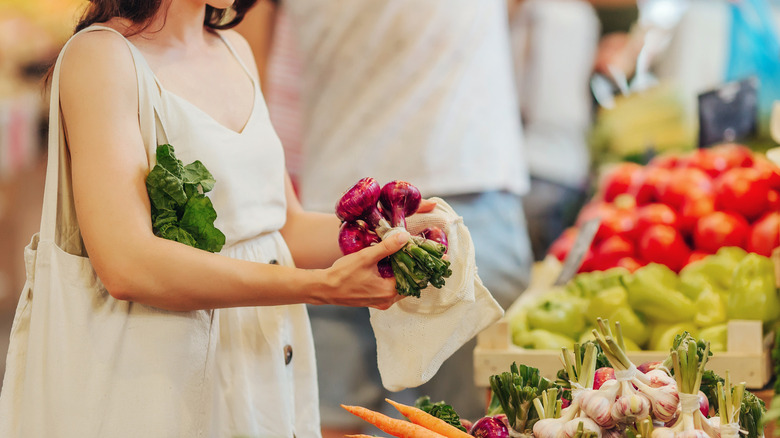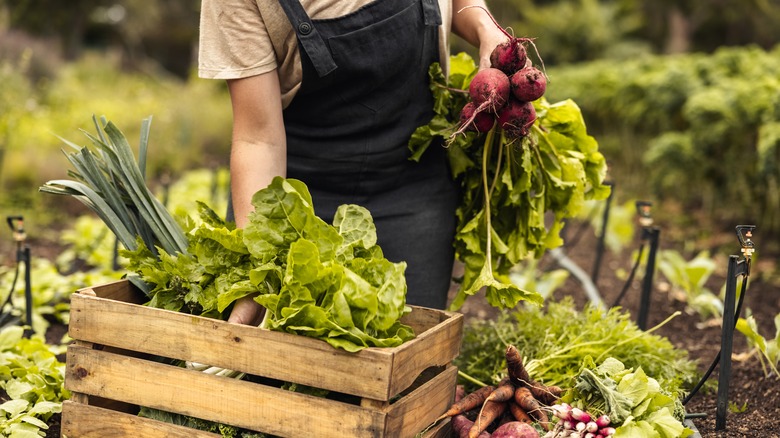The Reason Fresh Fruit And Vegetable Prices Are Skyrocketing
The latest wave of Coronavirus is slowly starting to recede in many areas, but prices at the grocery store are still soaring. Significant retail price increases can be found on every aisle; sticker shock was first felt in the meat and dairy departments, and now fresh produce prices are starting to climb, according to The Washington Post. The usual culprits are to blame for some of the price increases, but there are some additional, unexpected reasons that will cause us to shell out more green for our greens.
You've heard this sad song before: prices are going up at grocery stores and restaurants. Pandemic-caused labor shortages are causing supply chain issues, high prices at the gas pump have increased transportation costs, and demand for many products just can't be met. (Even food banks have not been spared from COVID-19 related problems.) The price-per-pound of vegetables shot up almost 20% from December 2020 to 2021, shares The Washington Post, and fresh fruit increased by 10% over the same period. When inflation starts to creep over 5%, grocery stores can no longer absorb the cost and raise prices.
From late 2020 to 2021, Winsight Grocery Business reported a 24% increase in wholesale fruit prices and about 12% for wholesale vegetables. An apple a day keeps the doctor away, but when the cost of that apple has increased by 20%, consumers might have to stretch their supply.
What other factors are raising the price of fresh produce?
After two years of dealing with pandemic-related inflation, consumers have become acquainted with the usual suspects causing high prices at the grocery store. Some emerging factors at play can shed some light on why the cost of fresh produce has risen so quickly over the past year and if there's a light at the end of this expensive tunnel.
According to Naturally Savvy, the primary producers of fresh produce in North America are South America, Mexico, Florida, and California. The cost of crops from these areas is dependent on weather conditions, the price of pesticides and fertilizers, and production and transportation costs. The Washington Post reports that an increase in the minimum wage in Mexico and new inspection programs implemented at the U.S.-Mexico border have caused a spike in production costs that have added to the increase in prices.
People living in the U.S. have also altered their eating habits during the pandemic, opting for healthier foods that they can prepare at home (per CNBC). An increased preference for "superfoods" has caused a high demand for fresh produce, and producers can't keep up.
Is there hope for our grocery budgets? The Wall Street Journal predicts price increases on imported foods and heavier produce ranging from 2% to 20% in 2022. Experts say that if there is any decrease in prices, it will be very gradual.

